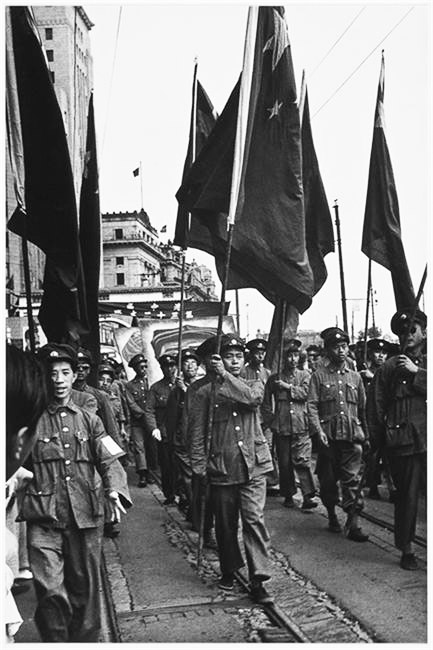By Christopher DeMarcus (The Cascade) – Email
Print Edition: January 29, 2014

The Reach has opened a new exhibition featuring photos from the National Gallery of Canada. The central theme: war and conflict.
Images of of amputated children, dying soldiers, and nuclear decay have been hung on the gallery’s clean walls to remind us that war is not only a force that gives us meaning, but an ultimate sacrifice.
The photographs of horror and destruction were juxtaposed by the gallery’s opening crowd, a mixed group of Fraser Valley citizens who packed the the exhibition space to its maximum capacity. Art enthusiasts sipped the Reach’s own brand of vino as they stared back at the faces in the photos.
“How old you do you think he is?” asked a young boy, pointing at a photograph of an 11-year-old boy from Nicaragua holding an AK-47. “I wouldn’t do that. I’d get all the kids together and fight back. I’d revolt!”
The young boy, about the age of nine, moved back into the crowd, explaining the situation of the picture to his younger bother. Both were confident they would never be child soldiers. For them, the photo must have been a fiction.
Mayor Bruce Banman took the opportunity to speak to a captivated crowd.
“The Reach is one of our best kept secrets in town. It’s a gem. Bringing excellence in culture to Abbotsford. What is the world, what is life, without art and history?”
Behind the mayor was a six-foot-wide photograph of a dying Canadian soldier.
After the mayor’s speech, curator Scott Marsden explained the exhibition as a chance to “explore the personal legacy of war and trauma.”
But the new exhibition was not the only thing to be announced.
“My departure is bittersweet, but I have a wonderful opportunity to start a new facility in Whistler,” executive director Suzanne Greening said. “The owner of Polygon Homes has hired me to operate a larger, private facility.”
Michael Audain owns Polygon Homes. As the Vancouver Sun reported back in May, plans for his museum have doubled in size to a full 55,000 square feet. Audain’s facility is now expected to cost over $30 million, $10 million more than when the the project was announced.
Referred to as a philanthropist by many art collectors in the Lower Mainland, Audain has built over 21,000 homes since 1980 and donated over $10 million to the Vancouver Art Gallery.
The Reach, on the other hand, is funded by local citizens and small business groups. According to a 2012 Community Report authored by the Reach, the gallery paid $69,217 in licensing fees to artists from 2009-2012. The payments are a commitment to local artists and the arts community.
The Reach also supports young artists with their Young Contemporaries program, which books local music and arts exhibitions along with craft beer tastings once a month.
At the same time the war exhibition is on, there are other showings of post-modern and traditional world views represented by a dynamic range of painters and multi-modal visual artists.
Down one hallway gleam the flexing muscles of a luchador wrestler, down another is a sculpture made of plastic bags, commenting on our society’s relationship with plastic consumerism, nature, and pollution.
“It’s great, in’t it?” museum volunteer Debrah Gary said. “You have to come back more than once. You can’t absorb it all in one evening.”
In addition to being an art gallery, the Reach also functions as the city’s archives. The records are a treasure trove of data for university professors, writers, and casual researchers who are given open access to the archives online.
“Our collections manager Kris Fouls has digitized over 16,000 photos. They’re being accessed from all across Canada,” Greening explained.
The current exhibitions are what the Reach does best: documenting the art and history of our world. The images of war that currently hang on the walls are hard to view. They function as windows into a the present state of violence and catastrophe around the world.
The job of the Reach is to continually teach us that despite our own comfort, disaster lies just beyond the frame of a photograph.


